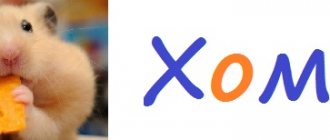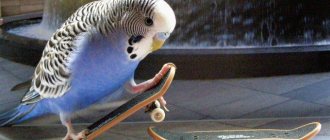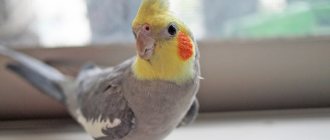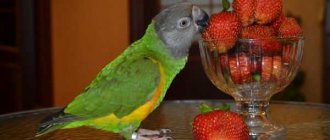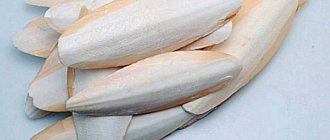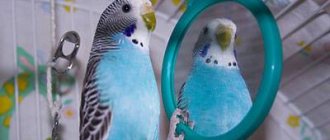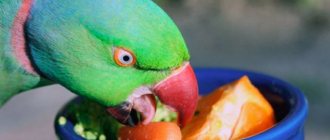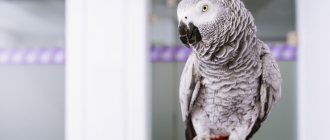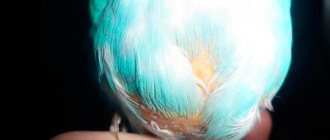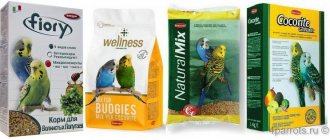If you got yourself a parrot, you probably thought about whether it needs sand, since many other birds use it in the process of their digestion.
First, the food ends up in the bird's crop, then it swells, and then ends up in the stomach, where the main part of the digestion process takes place.
In the stomach, food is absorbed with the help of gastroliths, that is, in simple words, inorganic sand.
If we talk about the digestion process of parrots, then everything is arranged in a completely different way.
Initially, food is digested in the crop, after which it ends up directly in the stomach, therefore, parrots can do without sand, since it does not play a key role in the digestion process. However, it still has benefits for digestion.
Despite this, many species of parrots use sand, clay and soil in the process of their life.
In other words, they simply eat the natural materials described above.
For example, macaw parrots act in a similar way; they love to eat clay, sand and earth.
They do this in order to fill their body with the necessary beneficial minerals and substances that are contained in the earth, sand and clay.
These substances are very useful for them, therefore, if a feathered friend has settled in your house, then you should try to give him the same opportunity.
Fortunately, specialty stores now sell specialized sand that is ideal for pet parrots.
- Which sand to choose for a parrot
- How much sand should you give a parrot?
- Types of Organic Sand for Parrots
- Why do parrots need sand for digestion?
Do parrots need sand?
It is known that caged birds consume small pebbles to improve the functioning of the digestive system. When food enters the crop, it swells and then moves to the stomach. There, with the help of gastroliths, the food is ground and passes further through the intestinal tract of the parrot.
The need for sand for a parrot
Gastroliths are grains of sand and pebbles, minerals and rocks that act as millstones. To ensure successful digestion, sand is desirable for a parrot. What gets into their crop undergoes enzymatic decomposition and only then enters the stomach.
In the wild, some species, for example, macaws, actively consume clay and soil. In this way, birds saturate their diet with minerals and trace elements, which are present in abundance in such soil. Such “treats” will replace mineral supplements for pets. Responsible, attentive owners should provide them for their pet.
Sand is needed not only as an additive in the menu. It is necessary to optimize digestion. The basis of the parrot's diet is rough plant food. They crush it only with their beak, but this is not enough. The food processed by enzymes in the crop enters the stomach, and there grains of sand, like millstones, grind and grind it.
If your pet doesn't pay attention to the food feeder, it shouldn't be a cause for concern. We can only conclude that at the moment the bird has such a balanced diet that there is no need for any additives.
Shopping for a parrot| Sand for a parrot
Popular manufacturing companies
Several companies include reliable manufacturers of sand for parrots:
- Versele-Laga . This manufacturer produces high-quality sand from natural sea shells and anise. Its main advantage is its unique composition, which is a source of minerals and trace elements. It also contains vitamin C, which is essential for birds during nesting or molting. As for the downsides, sometimes you come across packages that are not hermetically sealed.
- PRESTIGE . Branded sand, which is not only an integral part of the parrots' diet, but also helps the birds to grind down their beaks. The sand is cleaned using special equipment, so it does not contain dust and debris. Thanks to the vitamin formula, birds' metabolism improves and the condition of their claws improves. The disadvantages include the very high cost.
- Nature . A good manufacturer that produces a clean product. The color of the sand is pleasant, without large fragments of seashells, dust or debris. Contains useful minerals, which are a complete supplement to the basic diet. This sand is also similar in color to sea sand, in which wild parrots love to swim. Among the shortcomings is that the product packaging is not designed correctly. There is a special valve on the side of the box for opening, but when it is opened, the sand does not spill out, since it is packed inside a plastic bag.
- Biokraft . The manufacturer produces clean products that do not contain stones, seashell fragments, or even large grains of sand. This sand contains ground coal and coral chips and contains many vitamins and minerals. This mixture promotes normal digestion in birds and is also a good source of calcium. The downside is that this sand is not cheap, but it only lasts for 4 weeks. This is very uneconomical, since other manufacturers provide that 1 pack is enough for a parrot for 2-3 months.
You can also purchase sand for birds from Triol, Kristal, Rio, Vitakraft, Vitapol, Vaka Lux .
What should sand be like for parrots?
The assortment of specialized stores is amazing and before you go shopping, you need to decide which sand supplement will suit your pet and will not harm its health.
The main types offered for our pets in stores:
- inorganic;
- organic;
- mineral.
I want to warn you right away. The first type will not bring any benefit to your pet, and you will waste your money on purchasing it. I recommend choosing mineral or organic sand for your parrots.
Such an admixture will enrich the bird’s diet with substances and microelements necessary for the body, which will strengthen the health of the feathered friend and have a beneficial effect on its appearance. Pay attention to the composition of the product you are purchasing.
Mineral fertilizers for birds. Very important for all bird owners!
If flavorings are mentioned, it is not worth taking such sand for budgies. There will be more harm than good. In any case, a conversation with the seller will help you navigate and choose the best option for purchasing the product.
Read also
What to feed your cockatiel at home
What is it needed for
Despite the lack of need for gastroliths, sand is beneficial for parrots. It contains a large amount of minerals: calcium, phosphorus, magnesium and others.
That is, sand for birds can be used as feeding, like, for example, the same sepia. But unlike the latter, it cannot be used to clean the beak and claws.
Some breeds of parrots, such as Macaws, prefer earth and clay to sand. They do not have any significant benefit for the gastrointestinal tract, but at the same time they compensate for the lack of minerals.
Sand does not harm birds as such, but with some reservations. Some pets absorb it too actively, thereby disturbing the balance of minerals. An excess of the latter negatively affects the parrot’s well-being, and in difficult cases can lead to serious consequences, including death. Therefore, it is imperative to monitor what exactly your pet eats and in what quantities.
Types of organic sand
An additive containing shellfish shells crushed into crumbs and anise seeds will be an excellent source of minerals and trace elements.
Mineral mixture RIO for parrots. Why is min mixture needed and how to give it
Anise contains essential oils and other components that help birds cope with molting more successfully. Calcium from the shells will be the basis for your pet's new bright plumage, healthy skin and strong beak.
For better absorption of bait, you additionally need amino acids from wild rice, buckwheat, oats and vitamin D, produced under the influence of sunlight or ultraviolet lamp light.
How to use and give correctly
The best option is a separate feeder. Pet stores sell special containers for bulk additives. You can also mix sand with the grain mixture, but in small proportions - about 1 to 5. The bird itself will choose its favorite grains and eat sand if the body requires it.
The presence of small stones, broken shells and large salt crystals is unacceptable. All this can lead to injury. If the sand is collected independently and not bought in a store, then in addition to sifting it requires calcination - in a frying pan or in the oven.
Food sand should not be allowed to end up on the pallet . When mixed with down, feathers and droppings, it becomes dangerous. This is why it is so important to clean the cage daily.
For one medium-sized individual, 2 tsp is more than enough. sand in the feeder. The number can be increased during molting and nesting. During this period, birds especially need the minerals contained in the sand.
How many parrots do you have?
12
Preparation for the procedure
An important condition for carrying out water procedures is that the bird has a good mood and trust in its owner. For bathing, you need to prepare a small container of water or a sink.
Tips and recommendations for preparing your pet bird for a bath:
- The water must be warm and suitable for drinking, because... the bird may decide to drink it;
- It is recommended to bathe your pet in a dimly lit room so that he can relax;
- the distance from the edges of the container to the water should not be less than 2 cm;
- All windows in the apartment should be closed and the air conditioner should be turned off. You cannot wash your parrot at room temperatures less than 20 degrees;
- If the feathers are heavily soiled, add a special bird shampoo to the water. If you don't have it, you can use fragrance-free baby shampoo. For simple rinsing of feathers, chamomile infusion is suitable;
- When your pet tries to escape, you need to wrap yourself in a sheet or towel. During washing, the owner must hold the torso and the area in the cheek area;
- If a bird gets dirty in a sticky chemical, the feathers must be cut off if washing is impossible. During self-cleaning of the plumage, the pet may become poisoned. Do not clean feathers using solvents or other cleaning agents. They are very toxic and can cause the death of a bird.
Watch your dosage
Organic sand is essentially a food additive. Your feathered friend should eat it in moderation, so dosage is a very important point. Information about it is usually contained on the packaging. Please note that during the period of molting and breeding, the parrot needs slightly more minerals than usual.
An overdose is fraught with problems with the enzymatic system and a sharp deterioration in the bird’s well-being. When a bird consumes a food additive without stopping, it means there is already a problem. It's time to visit the veterinary clinic.
If your parrot shows moderate or weak interest in sand, there is nothing to worry about: the bird's body does not need additional minerals now. Just leave the supplement in the cage and let the bird decide for itself when to diversify its usual diet. Replenish the portion weekly.
How to use a lamp, where to place it, why put a budgie under a lamp?
After a UV lamp for a parrot has been selected, the first task for the parrot owner is to use the device correctly.
You need to understand that there should be no glass or other blocking devices between the bird and the lamp itself.
In addition, it is worth remembering that the phosphorus supplied from the lamp tends to decay over time, so it must be replaced annually with a new device, otherwise its effectiveness will be minimal.
For reference! Experts strongly recommend installing lamps for budgerigars at a distance of 15 to 30 cm from the bird’s cage. If you install it closer, the rays can burn the bird's plumage and cause harm to it, and at long distances the efficiency of light output is significantly reduced.
If it is a heating lamp for a parrot or a simple incandescent lamp, such a device does not guarantee the supply of ultraviolet rays to the bird, and you should also not resort to using devices for reptiles, whose wavelength range is close to the UV-B type, which threatens the bird with cataracts.
The same can be said about lamps for aquariums, the color rendering of which is adapted to water.
If the fluorescent lamp kit does not include an electronic ballast, that is, an electronic ballast, it must still be purchased.
This is due to the fact that usually alternating current can assume a frequency of 50 Hz, thereby creating a stroboscopic effect in the device.
The parrot's eye is capable of perceiving 10 times more frames in 1 second than the human organs of vision, due to which it can also record the stroboscopic effect.
And only thanks to such an auxiliary device the lamp reduces the high-frequency current fluctuation to 30-50 kHz, which guarantees the elimination of this effect.
Thanks to this device, the life of the lamp is also significantly extended, and such a lamp needs to be changed every six months if there is no electronic ballast.
In addition, the device promises low heating, as well as significant energy savings. You can ensure accurate operation of the lamp using a special timer.
For reference! The duration of operation of the fluorescent lamp should be no more than 12 hours, but not less than 4 hours. Experts advise turning it on 60 minutes after sunrise, and turning it off 60 minutes before sunset.
Soft bag
Fabric carriers have been around for a long time, but their modern development has primarily affected the increase in the number of all kinds of windows, mesh and other little things. The cat will no longer sit in a dark bag, not much different from an ordinary travel bag. It is difficult to organize a comfortable long trip in such a device. But for short distances the convenience is quite adequate.
The advantage of a soft cage is its lightness, compactness, and the ability to securely attach it to a car seat or, for example, to the handle of a suitcase.
Negatives: Not hygienic for long trips and difficult to clean quickly (although they can withstand washing in a regular washing machine).
Cost – 1,360 – 1,489 rubles.
